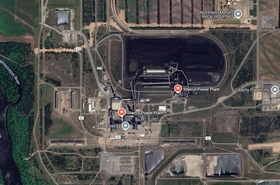Los Alamos National Laboratory (LANL) will lead a multi-institution project focused on transforming how chips are designed and manufactured.
The project will also explore how to fabricate chips that are more energy efficient and able to operate in extreme environments, in particular those with high levels of radiation.
LANL will combine its Nano Solutions On-Chip project (NSOC) project, led by Jennifer Hollingsworth, scientist at the Center for Integrated Nanotechnologies (CINT) at Los Alamos, with three other projects into a new Microelectronics Science Research Center (MSRC) called CHIME - the Co-design and Heterogeneous Integration in Microelectronics for Extreme Environments.
The NSOC project will see the laboratory deploy nanoscale semiconductors, such as quantum dots, in devices that use photons and electrons to carry information. By stacking electronic and photonic components into 3D structures, LANL says it will be able to solve key energy-efficiency and manufacturing challenges.
The University of Pennsylvania, Columbia University, the University of Wisconsin-Madison, Duke University, and Sandia National Laboratories are all partnering with LANL on NSOC. The laboratory said the project would help lay the groundwork for “understanding and mitigating radiation effects to meet rigorous requirements for space, defense, and nuclear-security applications.”
“This project aims to solve a key issue in electronics, that due to a dependency on electrons as information carriers, integrated circuits are reaching limits in bandwidth density, speed, and distances,” said Hollingsworth. “The complexity required to accommodate improvements on integrated circuits means as much as 30 miles of wires shuttling electrical data across 10 or more different levels of a chip, all produced by increasingly inefficient manufacturing processes.”
Based in Santa Fe, New Mexico, LANL was set up in the 1940s as a key site during the Manhattan Project to develop nuclear weapons. Today, the site is home to a number of supercomputers, including the Crossroads system and Venado, with the latter thought to be capable of 10 exaflops of peak AI performance.







